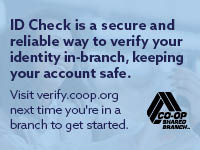If you’re like many, you’ve spent the past few years scrimping and saving. These are great habits to keep, even if your financial situation has improved.
If you still haven’t taken those steps, you might want to think about making these changes:
Restart your finances with a thorough financial plan. If you’ve lost a job or have been struggling to get control of your debt, savings or investments, plan a visit now with a Certified Financial Planner™ professional. At the meeting you can also examine spending patterns and the emotional drivers behind many of your financial decisions. If you don’t have a planner in mind, the Financial Planning Association has a website where you can search by location and specific planning issues.
Create a budget. If you’ve never tracked your spending before, make a commitment to do so for at least two months as you pull together financial statements, income sources and your bills. Start separating all your expenses into both fixed (amounts that don’t change) and variable (amounts that may change, such as restaurant meals, gasoline expenditures and entertainment expenses). Take into account any major expenses that are coming up within the year. Total your monthly income and expenses and then start identifying the expenses that you can trim and figure out whether you can direct the money you save to spending or debt. Congratulations! You’ve created your first budget. Also, don’t ignore planning for perks and vacations and make sure you plan ahead for big expenditures, such as cars and retirement.
Go cash or debit. Return credit cards to their correct status—a way to afford emergencies. Debit cards with a bankcard logo are typically welcome at most stores where credit cards are accepted. This way, you pay cash without carrying cash. If you don’t have such a card, you can probably get one from your bank or credit union to replace your traditional ATM card, but remember to tell them to limit your buying power to the cash balance in your account. Also check to make sure what protections exist on that card if it is lost or stolen and if they will forgive the balance in the event of the cardholder’s death. Be aware that some banks freeze your underlying checking account for your debit card until a dispute regarding an item purchased with a stolen card is resolved.
Live off lists. Yes, everyone makes shopping lists from time to time so they don’t forget to bring home milk and bananas. But the advantage of making very detailed shopping lists for everything—preferably on one page—is that it’s really a good way to keep impulse spending down. If, for example, you have a week of unexpected expenses (car repair, home repair, unexpected fees for your child at school), you can see what real priority items are and what you might be able to do without.
Set a schedule for checking your credit report. This is not so much a spending issue as a way to monitor the ongoing safety of your accounts and your borrowing status. You have three credit reports to check—TransUnion, Equifax and Experian—and you have the right to get all three of these for free once a year. The best way to do this is to request each report at staggered points during the year at annualcreditreport.com, which is the only guaranteed free site to order these reports. If any credit report site requests a credit card number before it surrenders a report, chances are good that you’ll be paying for that “free” report. Why should you stagger your reports? Because the same information travels between each agency and if there is an error or security breach, you may catch it faster if you’re checking throughout the year rather than at one time only.
Comparison shop at your desk. Shopping online has its own risks, including paying expensive shipping fees and overspending with a simple click among them. However, using the Internet to browse and compare prices can save time, gasoline and money. Websites like eBay, Amazon or mySimon.com can help you determine general price ranges for gifts you need that are sold online. Once you have those ranges, get on the phone and determine whether you can buy the same items more affordably at retailers close to home.
Don’t shop without coupons and discount codes. You don’t have to buy a newspaper to get coupons anymore. If you know particular stores where you’ll shop, sign up for their email lists. You’ll start receiving coupons and news of specials on a regular basis. If you buy particular products regularly, go to the manufacturer’s website and see if you can sign up for regular discounts online and in the mail. Also, if you do shop online, sites like BradsDeals.com and CouponCabin.com have promotional codes that you can type in for discounts before you hit the “total” button on an order. Usually, these codes will cover free shipping, but they might also buy additional discounts on an order. Never complete an online order without searching for a promotional code.
This article was submitted by the Financial Planning Association, the membership organization for the financial planning community. FPA members are dedicated to supporting the financial planning process in order to help people achieve their goals and dreams. Submission of this article does not imply an endorsement or recommendation of the Financial Resource Center site.


